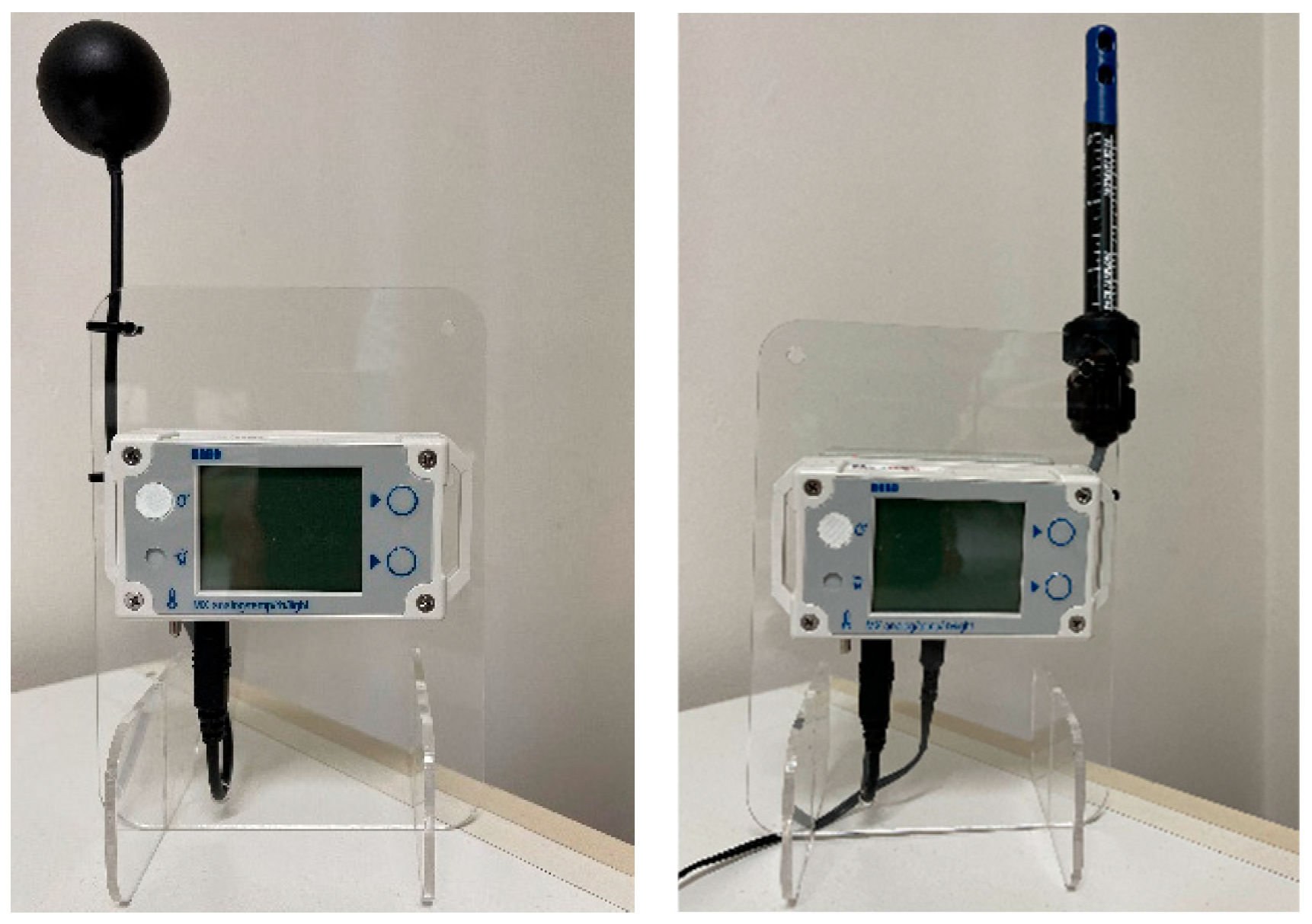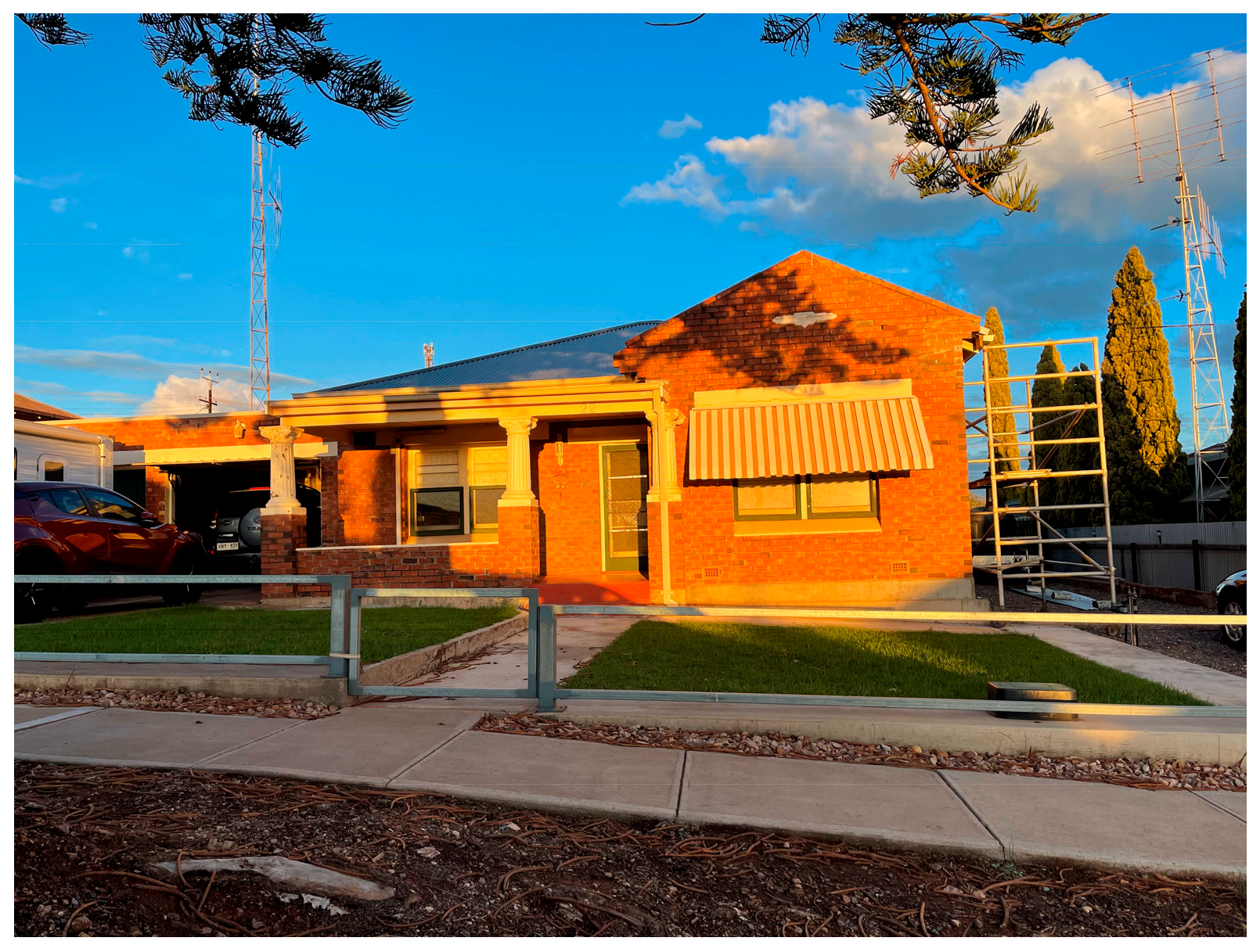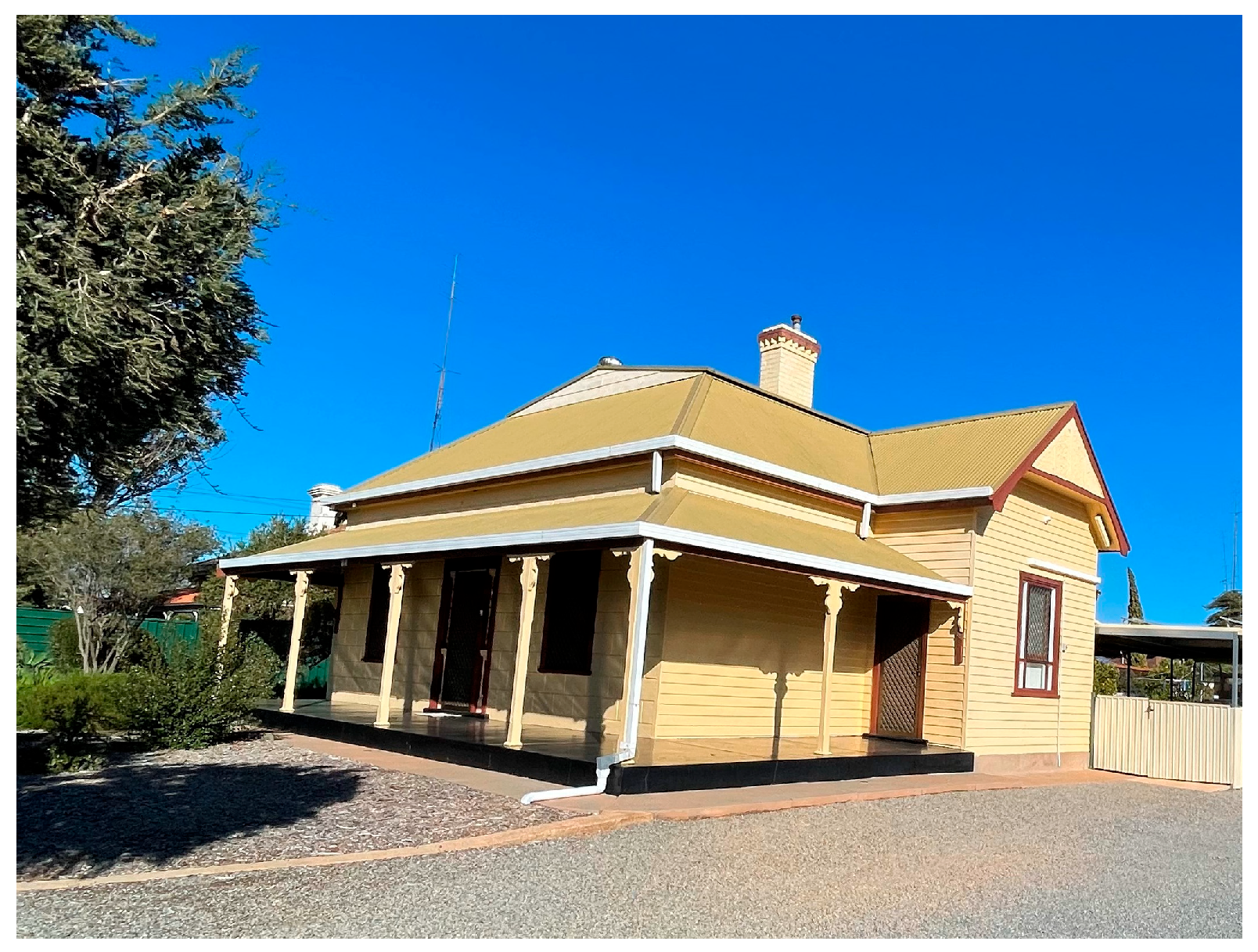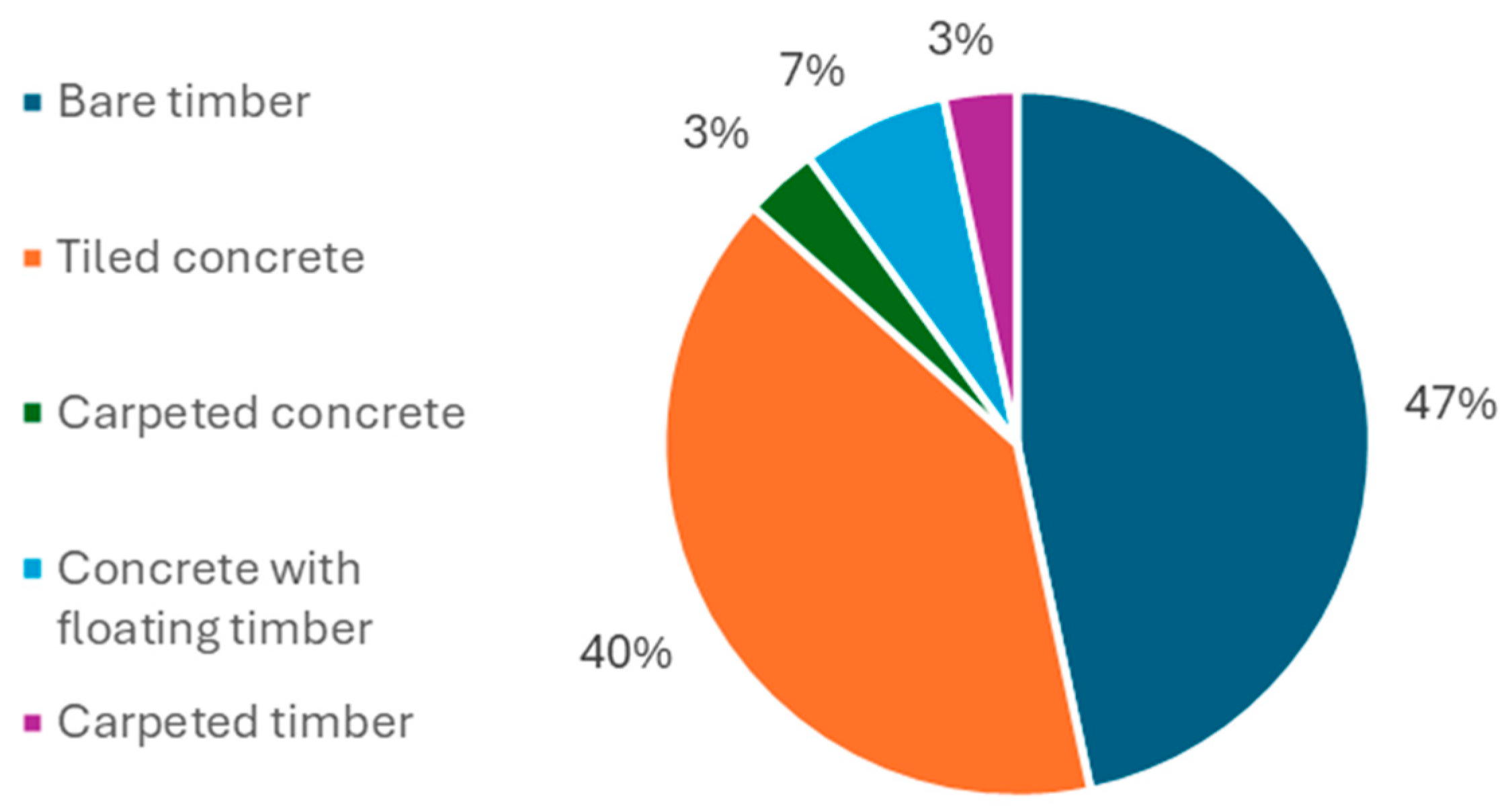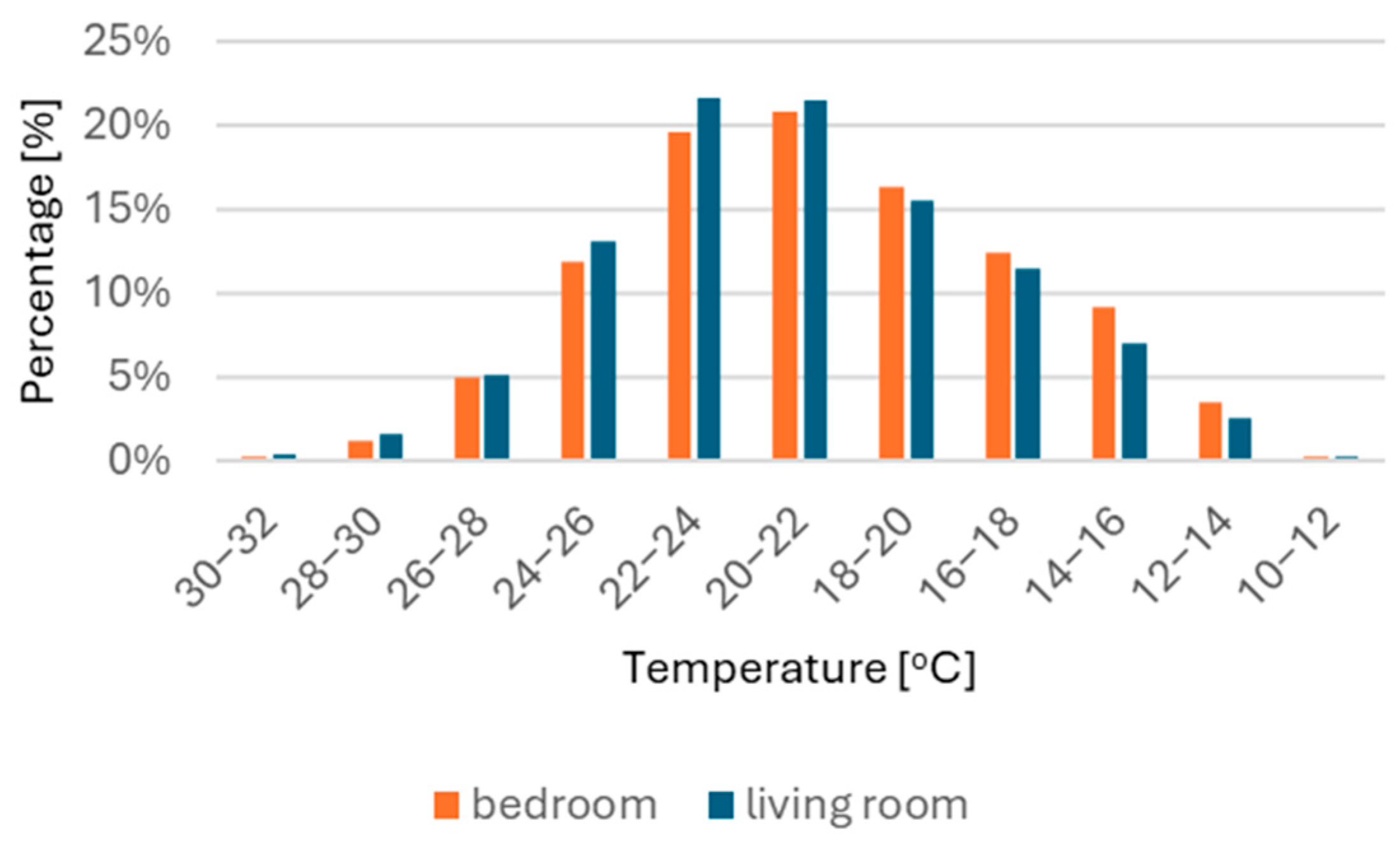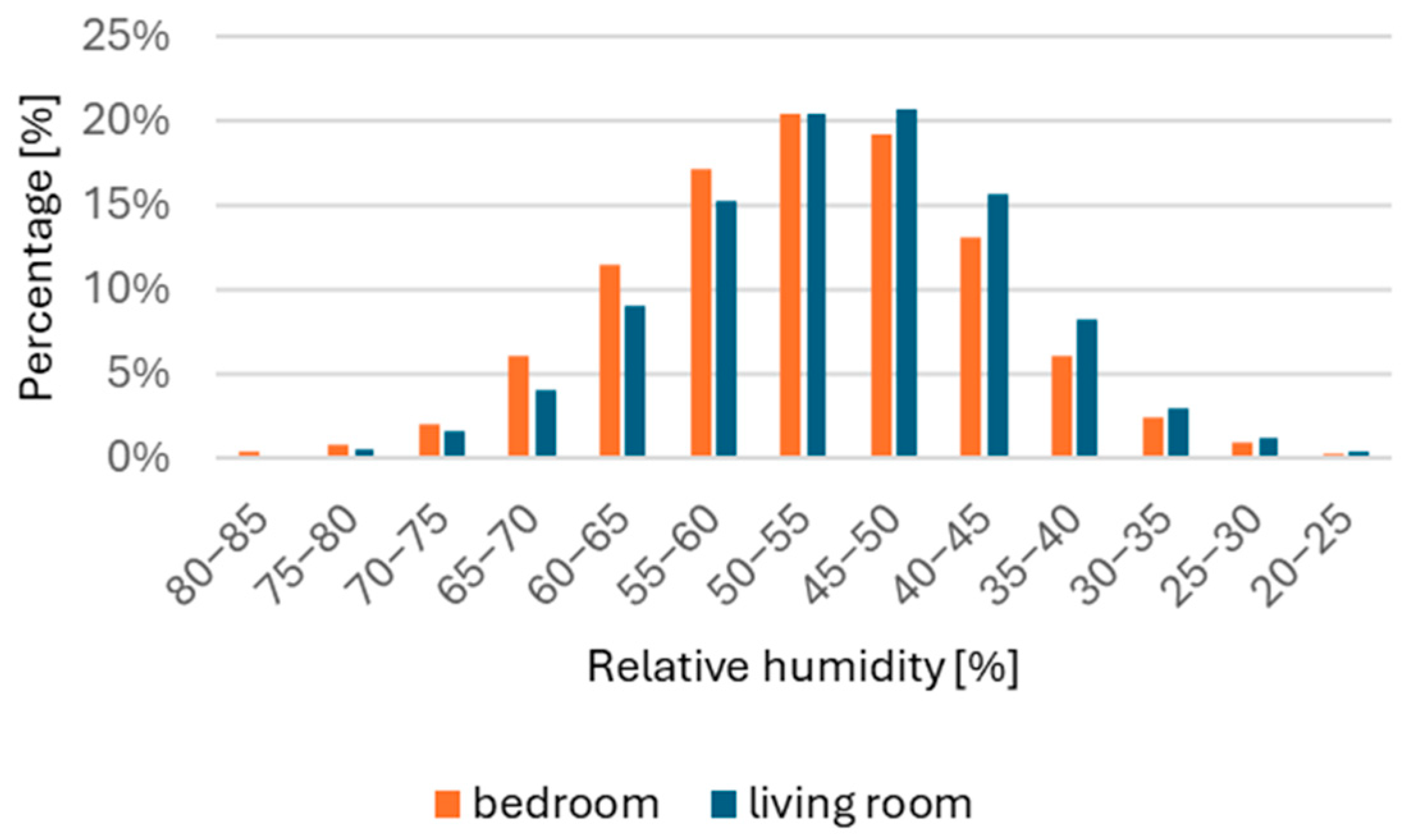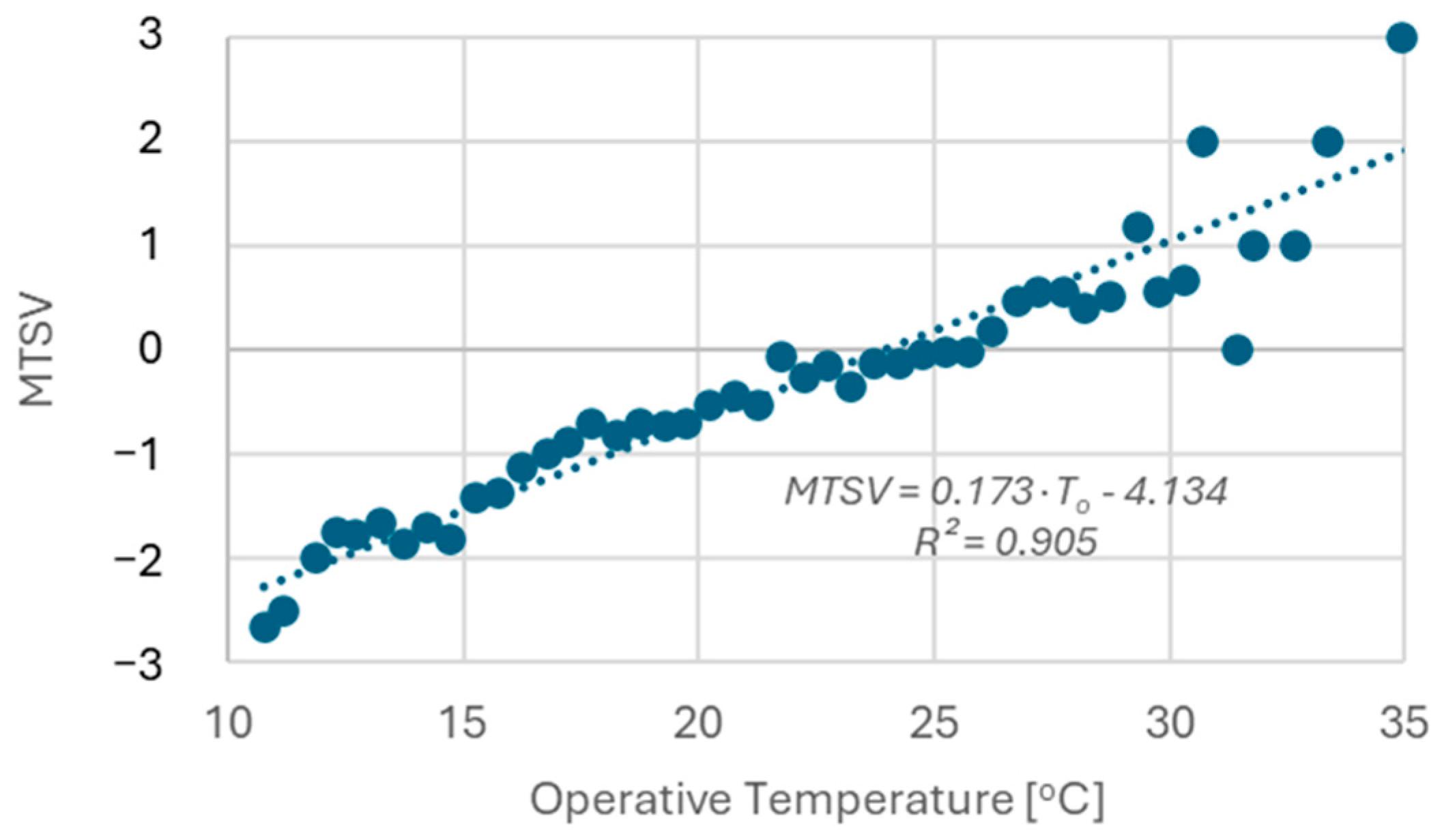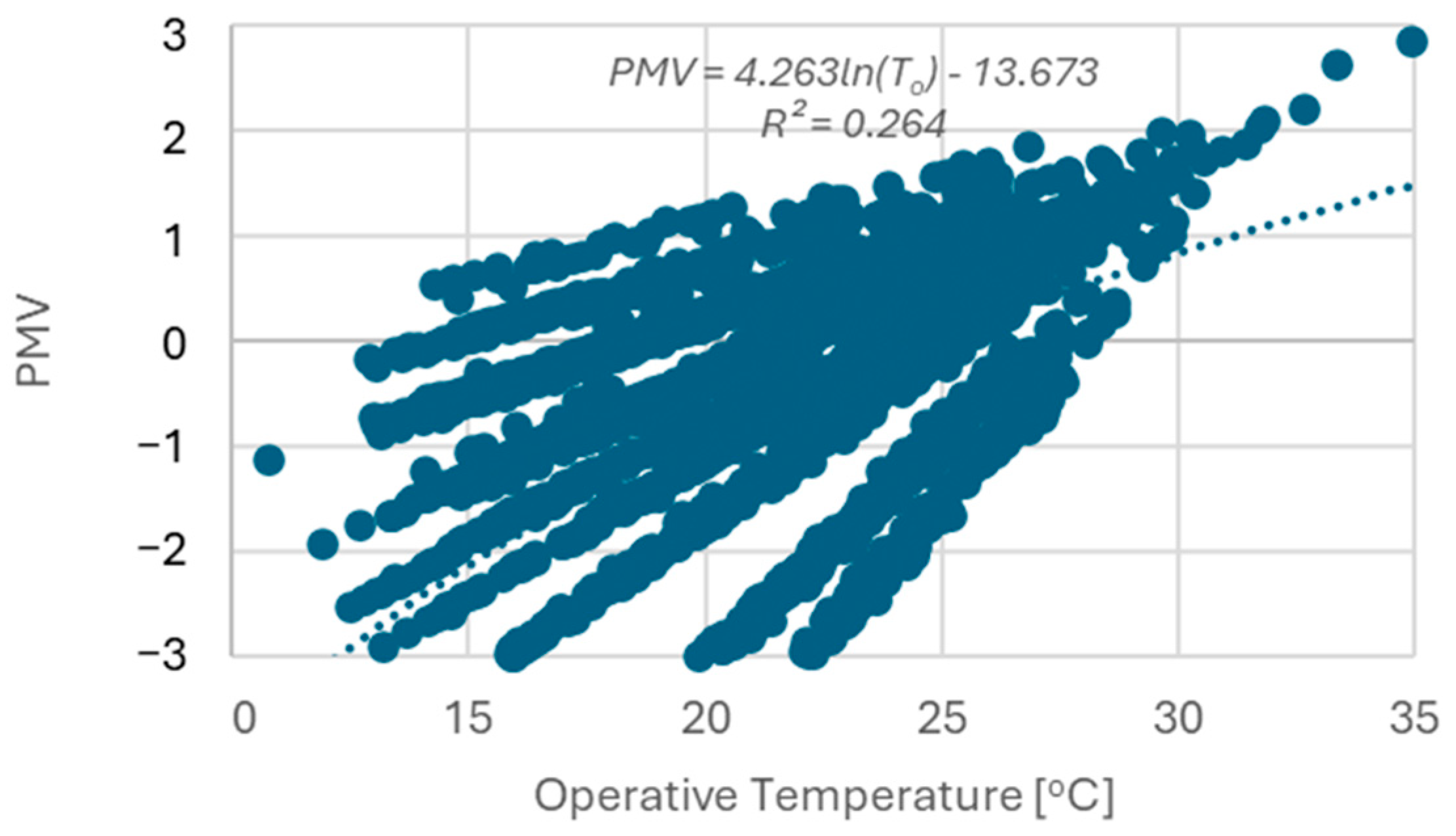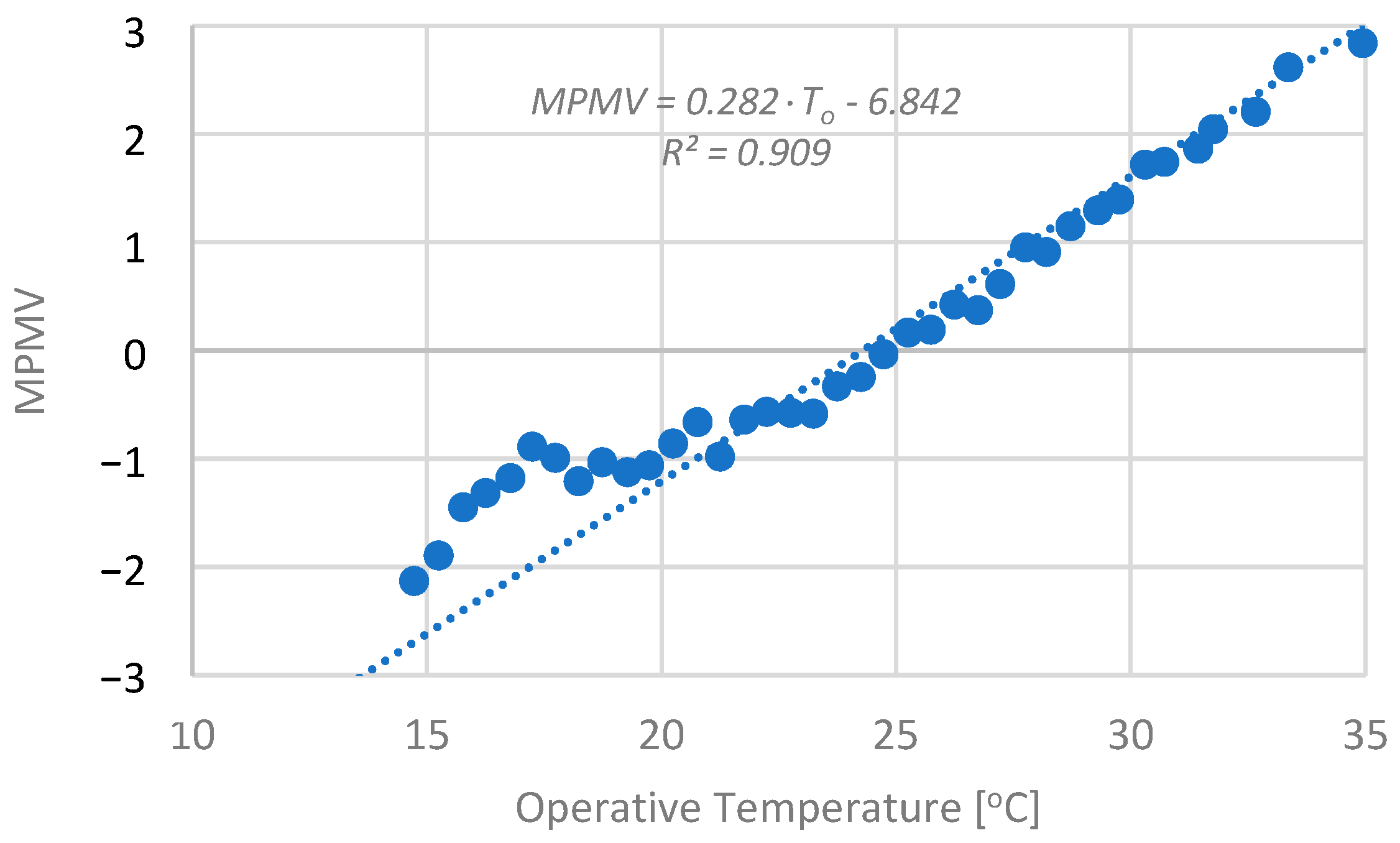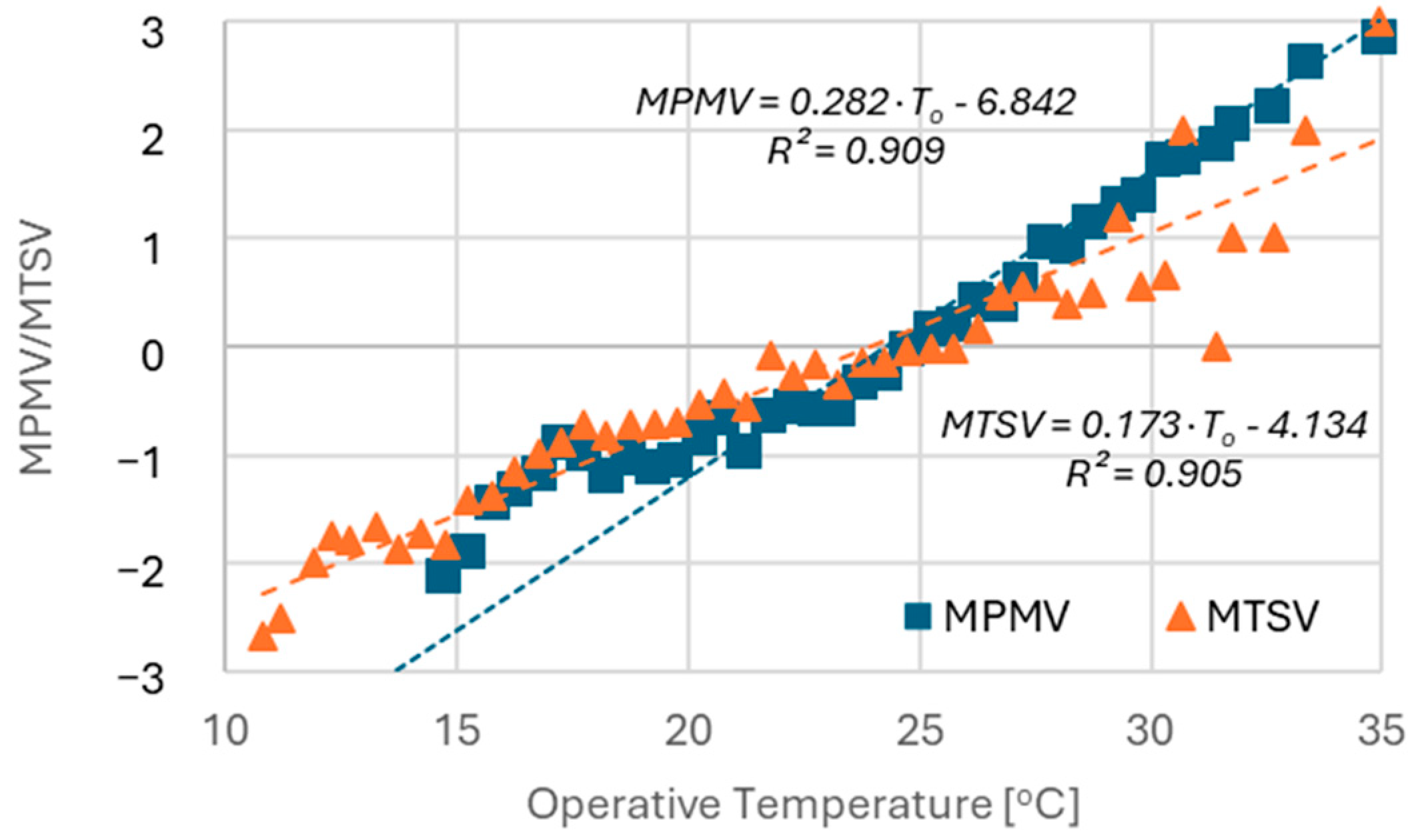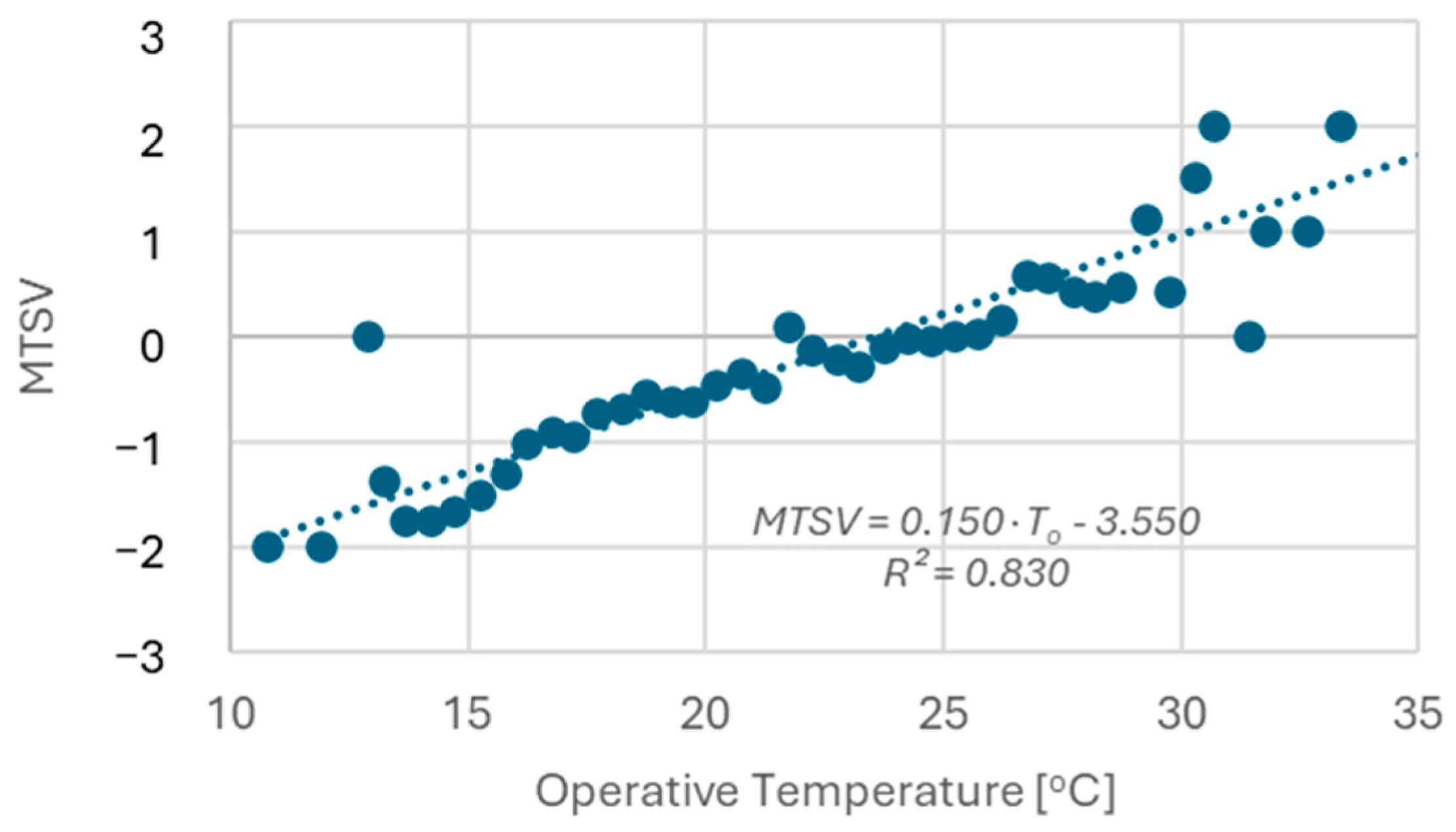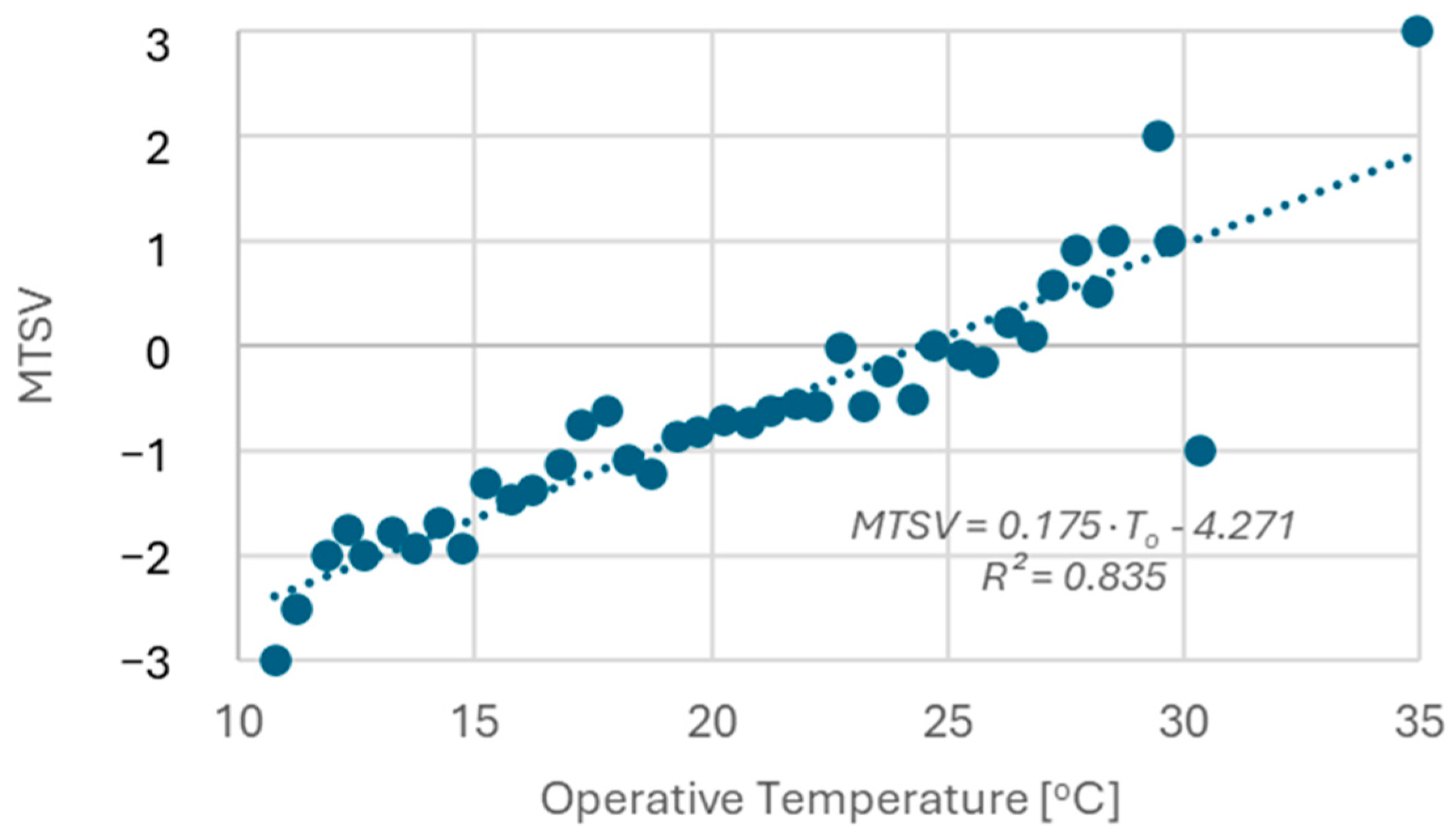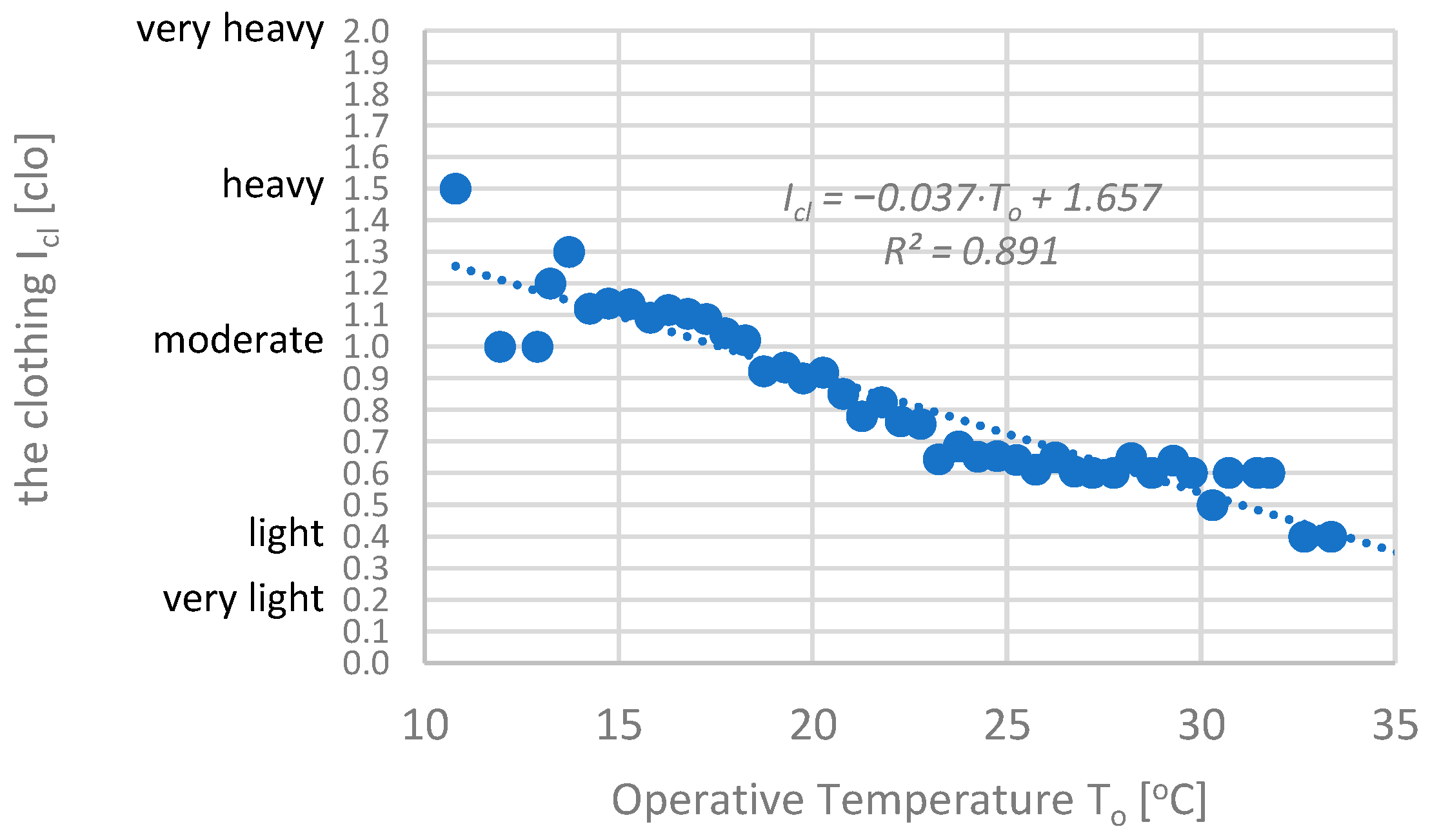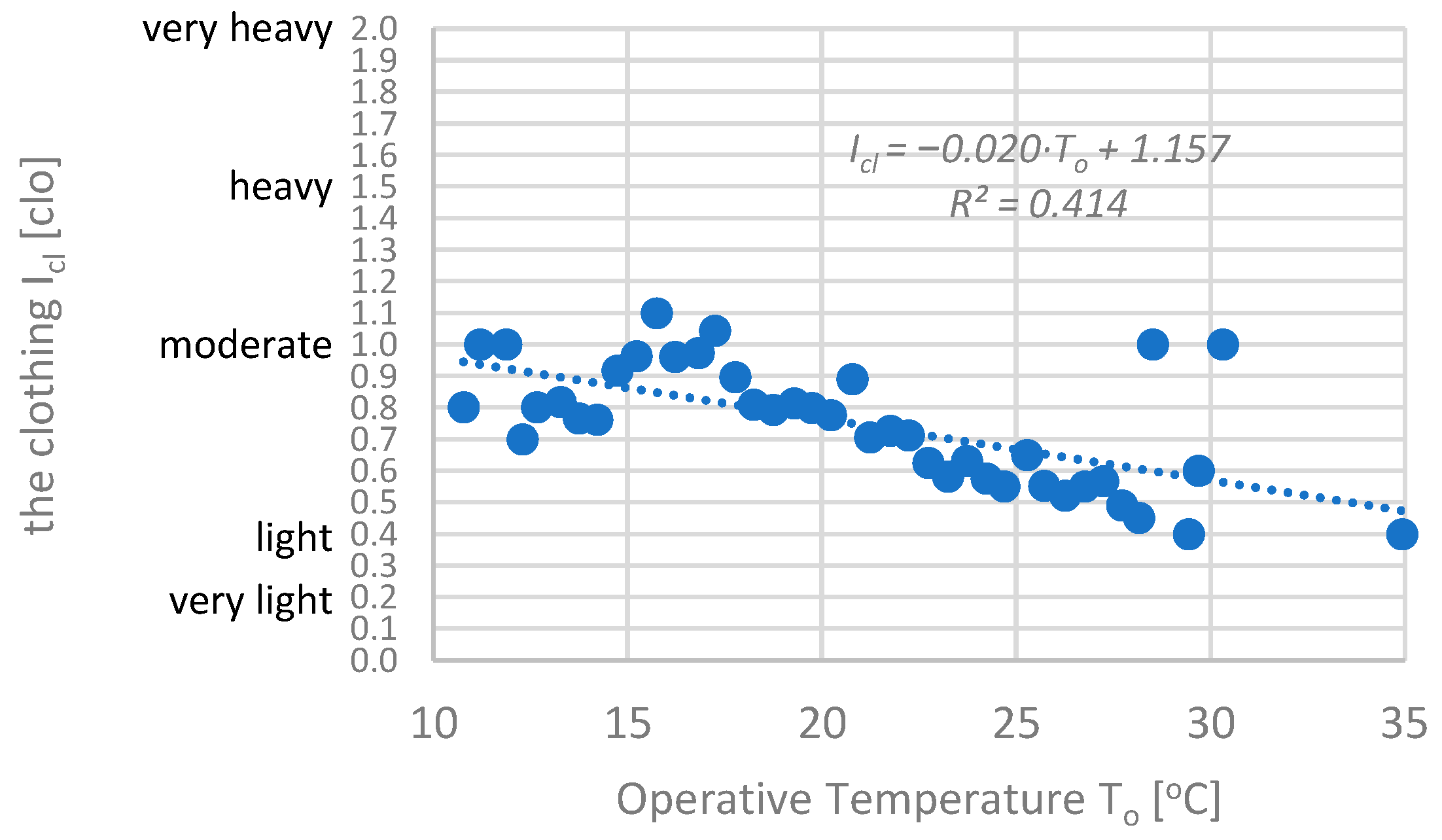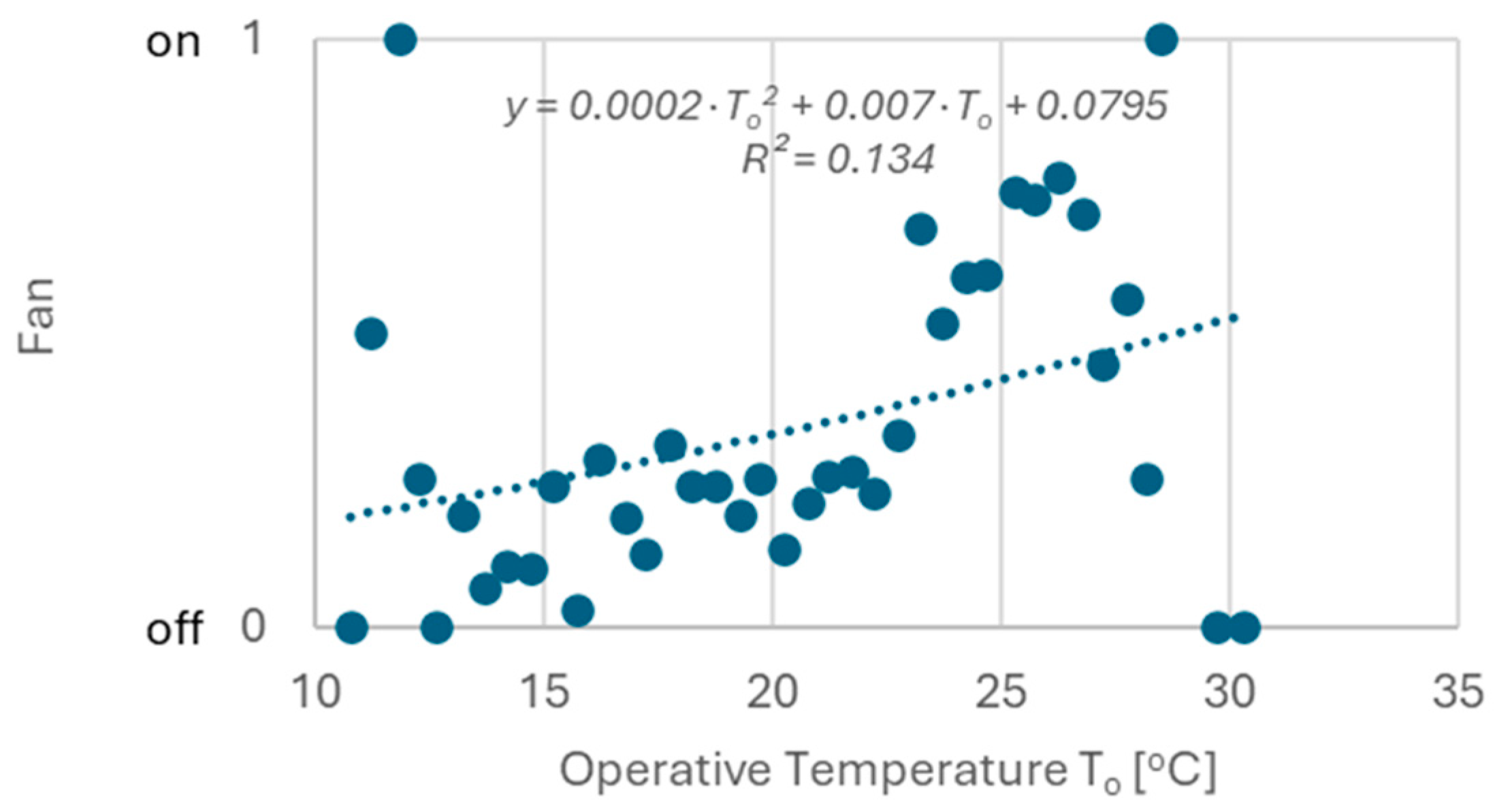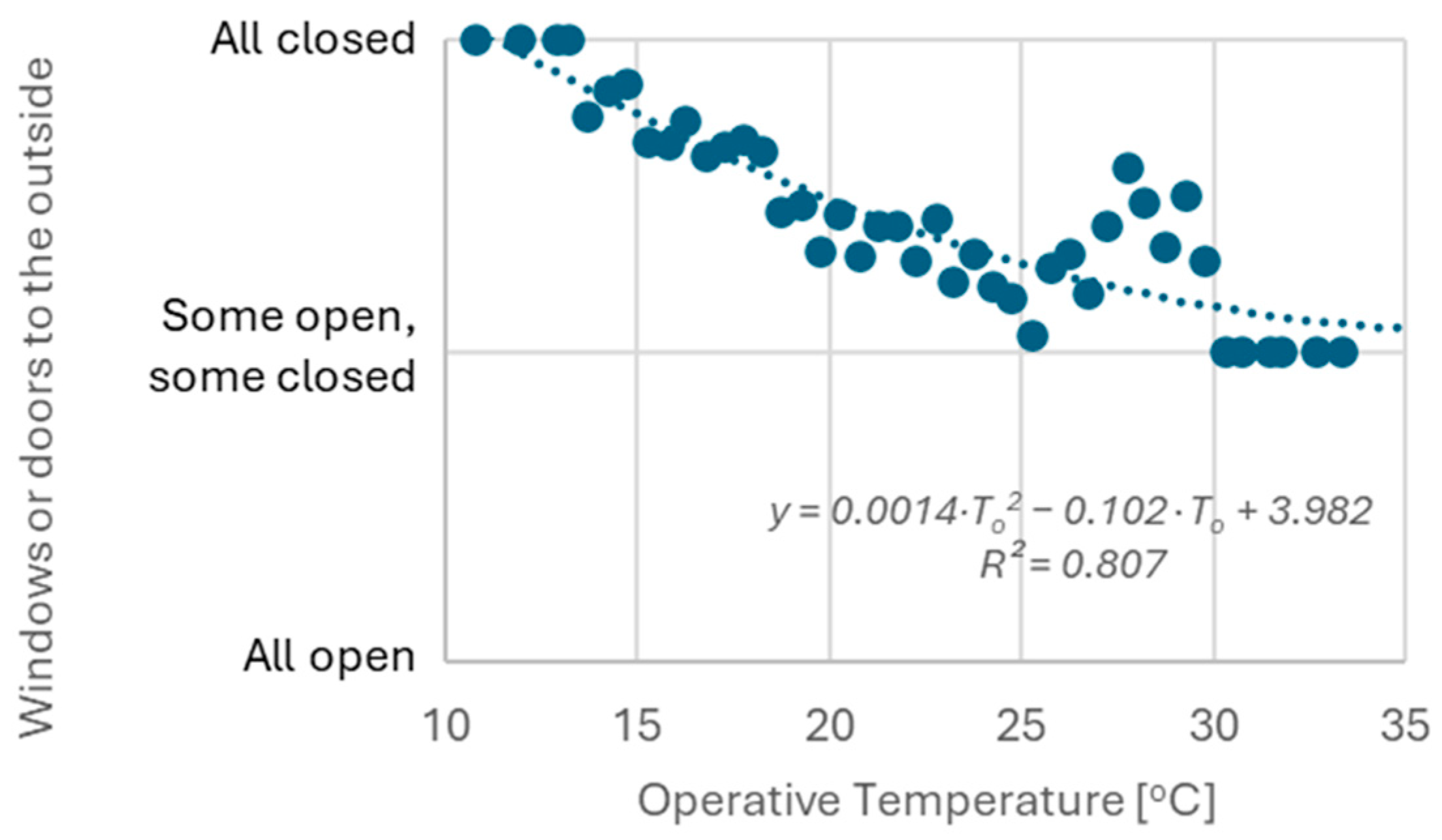1.1. Overview
In many industrialized countries, a significant portion of the energy consumed in buildings is dedicated to enhancing indoor thermal comfort. This suggests that the operational phase of a building presents substantial opportunities for energy savings [
1,
2]. However, an indiscriminate reduction in energy consumption may compromise the quality of the indoor thermal environment. Therefore, the key challenge is to minimize energy use without diminishing residents’ quality of life. As economic conditions improve and living standards rise, people increasingly demand higher levels of comfort and well-being.
Thermal comfort within residential buildings is a critical aspect of indoor environmental quality, exerting a significant influence on the health and productivity of the occupants. This study examines the internal parameters of buildings and their perception by residents in three towns of the Iron Triangle in South Australia, with a focus on understanding the relationship between indoor conditions and comfort sensations. The concept of thermal comfort is influenced by a range of factors, including, among others, metabolic activity, insulation of clothes, air temperature, radiant temperature, humidity, and air velocity. To provide a comprehensive analysis, this study employs the concept of the Predicted Mean Vote (PMV) and the operative temperature, which is a measure combining these factors to reflect the thermal environment as experienced by residents.
High temperatures can cause occupants to experience prolonged discomfort [
3], which negatively impacts human health. Therefore, field studies on the thermal environment across different climatic zones in Australia are urgently needed to establish appropriate thermal comfort assessment criteria tailored to local conditions. This research aimed to address knowledge gaps regarding actual occupant heating and cooling practices in climate zone 4 of South Australia. Additionally, it sought to examine whether homes in this climate zone are prone to overheating when cooling systems are not in use (i.e., in free-running mode). The findings will help refine occupant behaviour settings in the Nationwide House Energy Rating Scheme (NatHERS) in Australia, which currently assumes uniform behaviour across all climate zones. Incorporating evidence-based occupant behaviour settings into NatHERS is expected to enhance the accuracy of energy efficiency ratings for new home construction and major renovations in Australia.
1.2. Literature Review
The significance of thermal comfort is extensively documented in the literature [
4]. Research by Frontczak and Wargocki [
5], as well as Van Hoof [
6], has contributed to the expansion of knowledge in this domain by investigating a range of factors that influence indoor environmental quality and thermal comfort. Additionally, Hwang et al. [
7] conducted field studies highlighting the variability of thermal comfort preferences among different populations, while de Dear et al. [
8] examined the role of occupant behaviour in modifying indoor thermal conditions. Boerstra et al. [
9] further explored the psychological dimensions of thermal comfort, emphasizing the significance of perceived control over the indoor environment.
Numerous field studies in Europe have also demonstrated that subjective assessments of thermal comfort often diverge from model predictions, particularly in naturally ventilated and residential settings [
10,
11,
12].
The maintenance of optimal indoor conditions has been demonstrated to be critical for both well-being and performance, as supported by numerous studies [
13,
14,
15,
16,
17]. Over time, the concept of thermal comfort has evolved to incorporate adaptive models, which account for the dynamic nature of human comfort preferences. The adaptive approach postulates that thermal comfort is not solely dependent on physical parameters, but also on behavioural, physiological, and psychological adaptations [
18,
19,
20].
Historically, two principal thermal comfort models have been developed. The first is the Predicted Mean Vote (PMV) steady-state model, originally formulated by Fanger [
21], which serves as the basis for widely recognized thermal comfort evaluation standards, including ASHRAE Standard 55 [
22] and ISO 7730 [
13]. This model, along with its Predicted Percentage Dissatisfied (PPD) index, remains one of the most widely used methods for evaluating thermal environments [
14,
23]. However, despite its broad applicability, empirical studies suggest that the PMV model is often inadequate for assessing thermal comfort across diverse climatic and cultural contexts. For example, Madhavi [
24] conducted a field study in an Indian condominium and found that the actual comfort temperature range was significantly broader than that prescribed by the Indian Standard, with PMV values consistently overestimating actual thermal sensation votes.
Similarly, Fabi et al. [
10] observed in Danish households that PMV overestimated discomfort during transitional seasons, largely due to its inability to account for common adaptive behaviours such as clothing adjustment and window operation.
Comparable discrepancies have also been identified in arid regions, where the PMV model has been shown to systematically overestimate thermal discomfort due to its limited consideration of local acclimatization processes and cultural practices [
25,
26].
A field study conducted in Ondjiva, Southern Angola, emphasized the inadequacy of PMV in hot climates, particularly in non-conditioned buildings. The findings demonstrated that the model fails to capture occupant adaptation mechanisms, leading to significant deviations between predicted and perceived thermal sensations [
27]. Similarly, research carried out in Ghadames, Libya, reported a PMV value of 2.7—corresponding to a ‘hot’ thermal sensation—in naturally ventilated buildings. However, subjective assessments from occupants indicated lower levels of discomfort, underscoring the model’s tendency to overpredict heat stress in arid settings [
28]. An evaluation of historical residential buildings in Zanzibar further revealed PMV values ranging from 1 to 1.6, with associated Predicted Percentage Dissatisfied (PPD) estimates between 26.1% and 56.3%. These findings suggest that PMV does not adequately reflect actual occupant comfort levels in such contexts [
29]. Moreover, these studies highlight the model’s reduced sensitivity to critical factors in dry climates, such as air movement and evaporative cooling, which play a significant role in perceived comfort under low-humidity conditions.
Additional research from Gulf countries and semi-arid zones, including Nigeria, has corroborated these limitations, revealing poor alignment between PMV predictions and field data in naturally ventilated dwellings. These outcomes collectively underscore the necessity of employing regionally calibrated or adaptive comfort models in arid and semi-arid environments [
30,
31]. The second major approach is the adaptive thermal comfort model, developed by researchers such as Humphreys [
32,
33] and further refined by de Dear and Brager [
33]. This model incorporates behavioural adjustments and recognizes that occupants actively regulate their thermal environment, underscoring the necessity of providing them with control over indoor conditions [
9]. Studies comparing field survey data with laboratory findings have demonstrated that physiological acclimatization plays a crucial role in shaping thermal perception [
34]. As research into thermal comfort has progressed, persistent discrepancies have been identified between
PMV predictions and Mean Thermal Sensation Votes (MTSVs) [
24,
35,
36].
In buildings with greater opportunities for behavioural adaptation, such as those commonly found in Southern Europe, Borgeson and Brager [
11] found that thermal neutrality frequently occurred outside the PMV-predicted comfort zone, pointing to a mismatch between calculated and actual comfort.
In Poland, Fedorczak-Cisak et al. [
12] identified similar mismatches in a nearly zero-energy building, where high thermal mass and solar gains affected perceived comfort in ways not accounted for by the PMV model.
For instance, Becker et al. [
35] examined residential thermal comfort in Israel in homes without air-conditioning, revealing that MTSV values were higher than PMV predictions. Similarly, Al-Ajmi et al. [
36] found that PMV-derived neutral temperatures systematically underestimated actual comfort conditions in 25 air-conditioned homes in Kuwait. Due to its enhanced predictive accuracy, adaptive thermal comfort modelling has emerged as the dominant paradigm for evaluating real-world occupant experiences.
A field study conducted by Ioannou et al. [
37] across 30 dwellings in the Netherlands further substantiated these findings, demonstrating that while PMV effectively estimated neutral temperatures, it failed to accurately predict hot and cold sensations. Moreover, experimental data indicate that the thermal neutrality of occupants varies based on building characteristics such as thermal mass, even when controlling for factors like clothing insulation and metabolic rate.
Similarly, a comparative study by Jeong et al. [
38] in two distinct Australian climate zones revealed that acceptable temperature ranges were broader than those prescribed by ASHRAE’s adaptive comfort model, with approximately 80% of the range influenced by climatic variations. These findings underscore the importance of context-specific adjustments in thermal comfort assessment.
Furthermore, Forcada et al. [
39] investigated summer thermal comfort in older adults residing in Mediterranean nursing homes. Their study demonstrated that elderly individuals had a preferred summer comfort temperature of 24.4 °C, which was 0.9 °C higher than that of younger adults, indicating greater thermal tolerance in aging populations.
1.3. Purpose and Scope
The study of the internal parameters of buildings and their perception by residents was conducted between June 2023 and February 2024. The analyses focused on residents and buildings situated in three South Australian towns collectively referred to as the “Iron Triangle.”
The Iron Triangle in southern Australia, encompassing the cities of Port Augusta, Whyalla, and Port Pirie, is distinguished by its unique temperature characteristics compared to the rest of Australia. The region in question is characterized by a greater prevalence of extreme temperatures, particularly higher summer temperatures and greater temperature variability throughout the year. It has been observed that residents report considerable effects on their health and comfort as a result of these extreme temperatures, with notable increases in fatigue during periods of high temperatures and respiratory issues during periods of low temperatures [
40].
The objective of the research and subsequent analysis was to ascertain the relationship between the internal conditions prevailing within the building and the comfort sensations experienced by residents, as well as the actions they undertake in response to changes in these internal conditions. The research was conducted in collaboration with the University of Adelaide, with the participation of Dr Artur Miszczuk. The data obtained was subjected to detailed analysis at Dr Miszczuk’s home university, and the results were used to prepare the following article.
In summary, the main research objectives of this paper are as follows:
To characterize the thermal environments of homes in the Iron Triangle region of South Australia.
To determine the neutral temperature and the acceptable temperature range for occupants.
To establish an adaptive thermal comfort model that aligns with the local climatic environment, thereby enriching and complementing the Australian thermal comfort database and providing a reference for indoor temperature settings.
The findings of this study contribute to the growing body of knowledge on thermal comfort, with relevance to residential buildings in hot climates. An understanding of the relationship between indoor environmental parameters and occupant comfort can inform the design and management of buildings, thereby enhancing both comfort and energy efficiency. The implications of these findings are significant for architects, engineers, and policymakers seeking to create sustainable and comfortable living environments.
By investigating the preferences and adaptive behaviours of residents, this research is aligned with the broader objectives of enhancing indoor environmental quality and promoting sustainable living practices. The study’s comprehensive approach, which incorporates both quantitative data and subjective assessments, provides a detailed and nuanced understanding of thermal comfort in residential settings. This finding is consistent with those of previous studies, which have highlighted the importance of incorporating occupant preferences into the design and operation of buildings.
